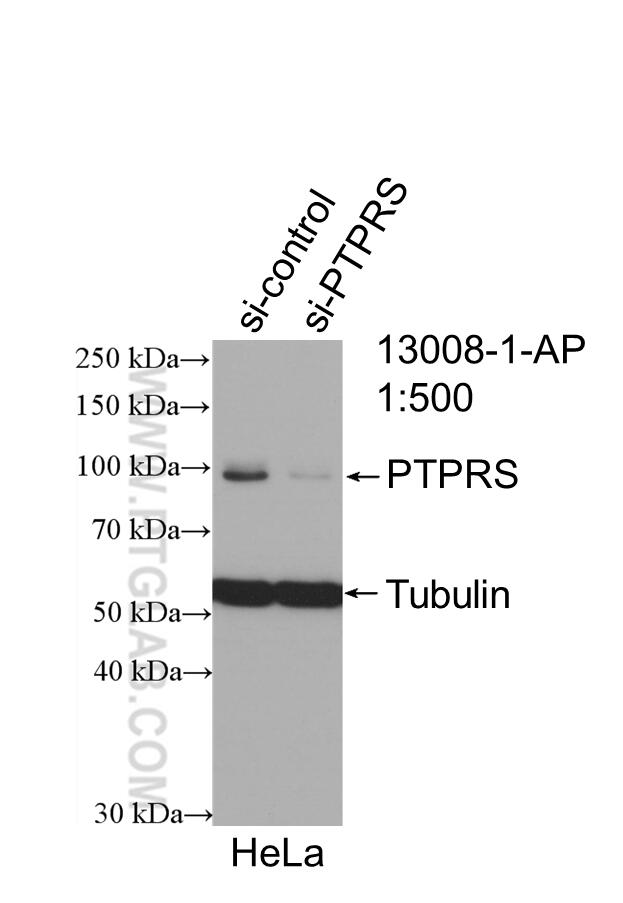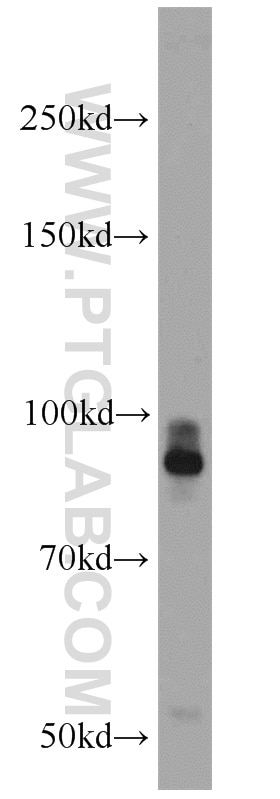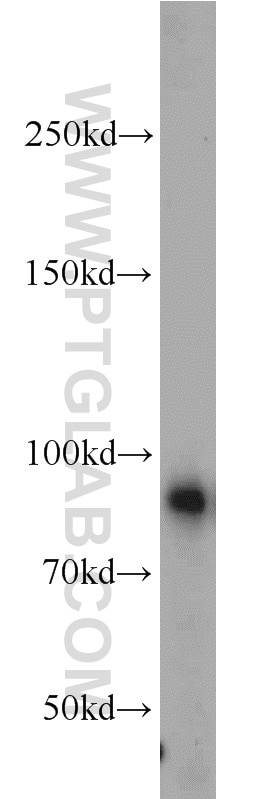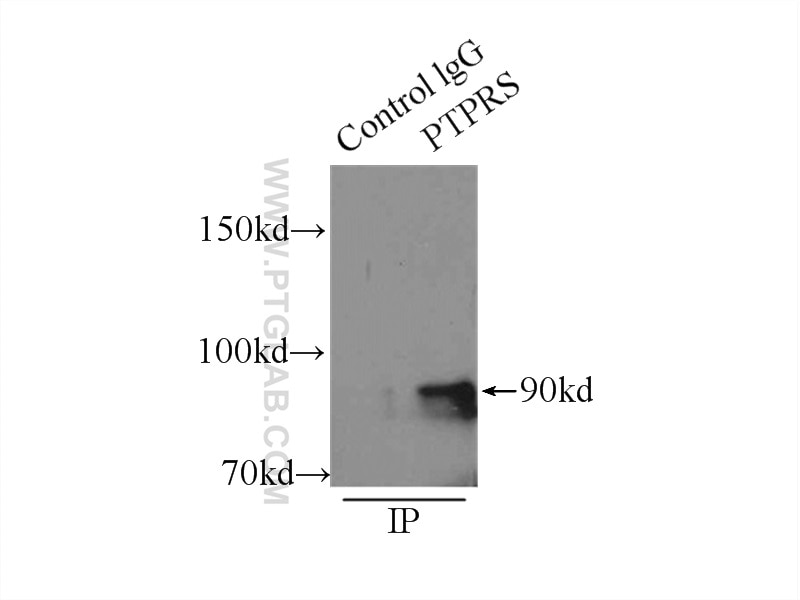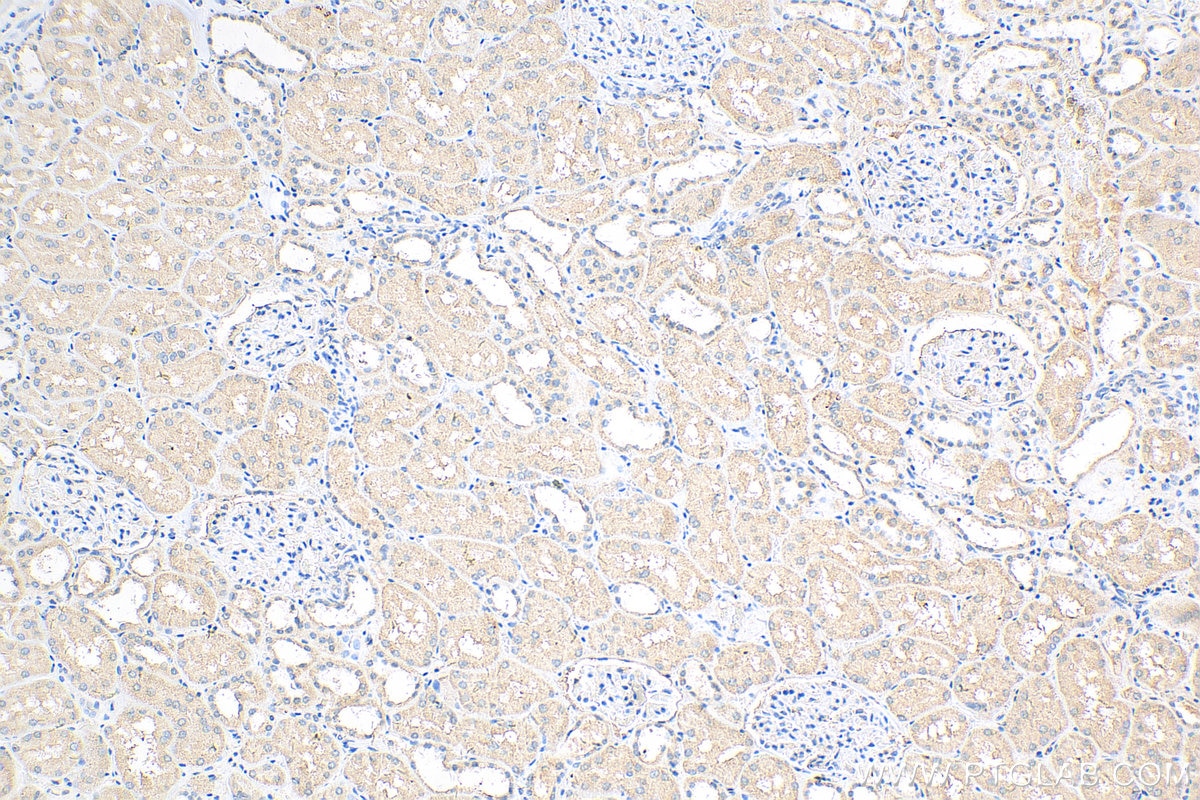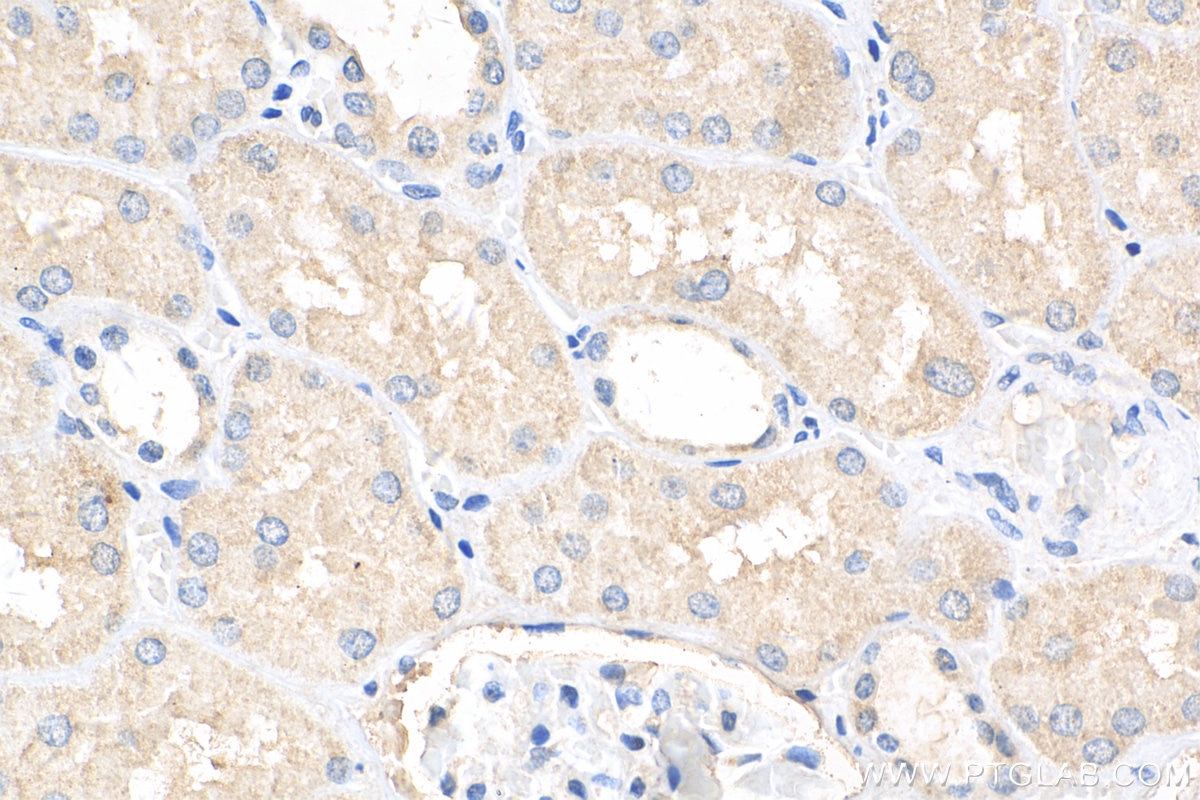- Phare
- Validé par KD/KO
Anticorps Polyclonal de lapin anti-PTPRS
PTPRS Polyclonal Antibody for WB, IP, IHC, ELISA
Hôte / Isotype
Lapin / IgG
Réactivité testée
Humain, rat, souris
Applications
WB, IHC, IF, IP, ELISA
Conjugaison
Non conjugué
N° de cat : 13008-1-AP
Synonymes
Galerie de données de validation
Applications testées
| Résultats positifs en WB | cellules HeLa, tissu cérébral de souris |
| Résultats positifs en IP | tissu cérébral de souris |
| Résultats positifs en IHC | tissu rénal humain, il est suggéré de démasquer l'antigène avec un tampon de TE buffer pH 9.0; (*) À défaut, 'le démasquage de l'antigène peut être 'effectué avec un tampon citrate pH 6,0. |
Dilution recommandée
| Application | Dilution |
|---|---|
| Western Blot (WB) | WB : 1:500-1:1000 |
| Immunoprécipitation (IP) | IP : 0.5-4.0 ug for 1.0-3.0 mg of total protein lysate |
| Immunohistochimie (IHC) | IHC : 1:50-1:500 |
| It is recommended that this reagent should be titrated in each testing system to obtain optimal results. | |
| Sample-dependent, check data in validation data gallery | |
Applications publiées
| KD/KO | See 1 publications below |
| WB | See 8 publications below |
| IHC | See 3 publications below |
| IF | See 1 publications below |
Informations sur le produit
13008-1-AP cible PTPRS dans les applications de WB, IHC, IF, IP, ELISA et montre une réactivité avec des échantillons Humain, rat, souris
| Réactivité | Humain, rat, souris |
| Réactivité citée | rat, Humain, souris |
| Hôte / Isotype | Lapin / IgG |
| Clonalité | Polyclonal |
| Type | Anticorps |
| Immunogène | PTPRS Protéine recombinante Ag3691 |
| Nom complet | protein tyrosine phosphatase, receptor type, S |
| Masse moléculaire calculée | 128aa,14 kDa; 1948aa,217 kDa |
| Poids moléculaire observé | 75-100 kDa |
| Numéro d’acquisition GenBank | BC029496 |
| Symbole du gène | PTPRS |
| Identification du gène (NCBI) | 5802 |
| Conjugaison | Non conjugué |
| Forme | Liquide |
| Méthode de purification | Purification par affinité contre l'antigène |
| Tampon de stockage | PBS with 0.02% sodium azide and 50% glycerol |
| Conditions de stockage | Stocker à -20°C. Stable pendant un an après l'expédition. L'aliquotage n'est pas nécessaire pour le stockage à -20oC Les 20ul contiennent 0,1% de BSA. |
Informations générales
Type II a receptor protein tyrosine phosphatases (rPTPσ) are cell surface receptors important for nervous system development, function, and repair.The expression of rPTPσ has previously been reported in b-cells and other target organs for INS although the probes chosen did not permit to distinguish between the splice variants.Proteolytic processing near the transmembrane domain generates an extracellular N-terminal E-domain of 130 kDa and a C-terminal P-domain of approximately 85 kDa of rPTPσ,and the short splice variants rPTPσ 3 and 4 contain an E-domain of 95 kDa (PMID: 16552719). rPTPσ expression was observed in tissue lysates of the adult mouse sensory-motor cortex and thoracic spinal cord (T8-T10) as a 75-80kDa immunoreactive band (PMID: 19780196).
Protocole
| Product Specific Protocols | |
|---|---|
| WB protocol for PTPRS antibody 13008-1-AP | Download protocol |
| IHC protocol for PTPRS antibody 13008-1-AP | Download protocol |
| IP protocol for PTPRS antibody 13008-1-AP | Download protocol |
| Standard Protocols | |
|---|---|
| Click here to view our Standard Protocols |
Publications
| Species | Application | Title |
|---|---|---|
ACS Chem Neurosci Small Molecules Targeting PTPσ-Trk Interactions Promote Sympathetic Nerve Regeneration. | ||
J Gene Med Downregulation of lncRNA HCG11 promotes cell proliferation of oral squamous cell carcinoma through sponging miR-455-5p. | ||
Curr Eye Res Expression of Perineuronal Nets, Parvalbumin and Protein Tyrosine Phosphatase σ in the Rat Visual Cortex During Development and After BFD. | ||
J Cell Biochem Chondroitin sulfate proteoglycan represses neural stem/progenitor cells migration via PTPσ/α-actinin4 signaling pathway. | ||
Aging Cell Chronic TNF exposure induces glucocorticoid-like immunosuppression in the alveolar macrophages of aged mice that enhances their susceptibility to pneumonia |
